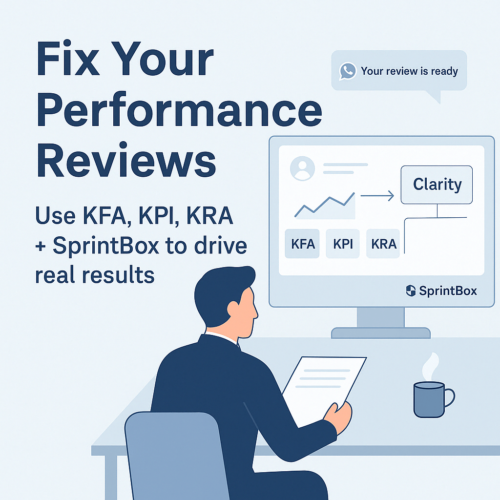Most business owners know they should track performance. But in reality? Reviews are vague, teams are confused, and progress feels stuck.
The good news?
Just understanding KFA, KPI, and KRA—and using them right—can quietly transform how your team performs.
Quick Glossary
-
KFA (Key Focus Area): What to focus on at work.
-
KRA (Key Result Area): The specific results expected.
-
KPI (Key Performance Indicator): A measurable target that tracks success.
What is KFA?
KFA stands for Key Focus Area.
It’s not a metric. It’s simply what a person should focus on at work.
“KFA is just a direction. When businesses get it right, people know exactly where to focus—even without being told.”
Example: A small retailer set “Customer Satisfaction” as the KFA for their store manager. Within 3 weeks, return customers increased, and Google reviews doubled—without changing the product or pricing.
KFA vs KRA vs KPI – What's the Difference?
Here’s the simplest way to look at it:
Term: KFA
What it means: What to focus on
Example: “Product Quality”
Term: KRA
What it means: Result area
Example: “Zero Product Returns”
Term: KPI
What it means: Measurable target
Example: “< 2% return rate this month”
“When KFAs give direction, and KRAs set the goal, KPIs help measure if we’re on track.”
Example: A hospital once set “Patient Trust” as a KFA, with KRA as “Timely Discharge” and KPI as “90% discharges before 12 PM”. Patient ratings went up 2 points in 30 days.
How to Set Effective KRAs and KPIs
Start from your business goals →
Break them down role-wise →
Define just 2–3 KRAs per role →
Assign clear KPIs for each
“A home appliance dealer gave each sales staff 2 KRAs linked to WhatsApp follow-ups and accessories add-ons. In 45 days, sales per invoice jumped by 27%.”
Less is more. The goal is clarity, not control.
Where Most Businesses Struggle
-
KRAs are too vague or forgotten
-
KPIs are set but never tracked
-
Reviews become opinion-based
-
Employees feel unsure what success looks like
“One business owner told us, ‘I felt like a nag. Now SprintBox tracks KPIs and I just review progress. No more chasing.’”
SprintBox™ is your virtual assistant that translates business goals into clear performance parameters—automatically.
It helps you:
-
Set KRAs + KPIs for each role
-
Track progress without extra work
-
Align your team with what truly matters
“One client gave SprintBox their org chart and targets. In 3 days, they had a working KPI tracker and action plan for 7 team members.”
Want a clean sheet to set your team’s performance plan?
Click here to get it on WhatsApp
(We’ll also send you a free checklist from SprintBox to help you fill it easily.)
Final Thought
You don’t need a big system to track performance. You just need clarity. And a system that runs with you—not against you.
Let SprintBox simplify it for you.
Start small. See results in 2 weeks.
